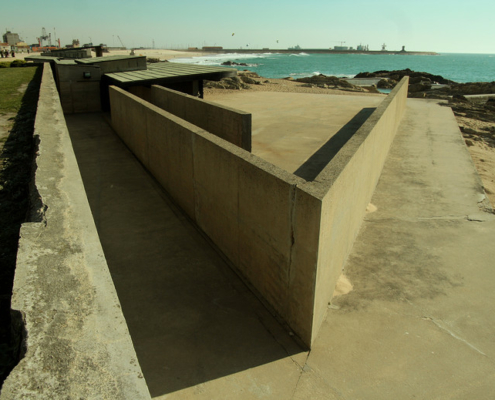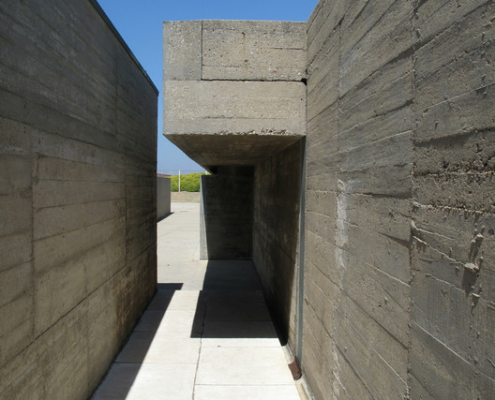The Leça de Palmeira beaches are on the northern coastline of Matosinhos, a small town to the north of Porto and boast two saltwater swimming pools built to blend seamlessly into the natural landscape. Husky rock formations frame each pool—one for kids, one for adults—making them look like little oases at the ocean’s edge. In fact, the pools are lined, like any other, with plain old drab concrete. While clearly visible, the concrete fades into its rocky surroundings like some desert mineral, emphasizing the fluid relationship between nature and artifice.
The Leça Swimming Pool complex consists of changing rooms, a café and two swimming pools, one for adults and one for children. It is located between the Atlantic Ocean and the access road that follows the coastline, but positioned almost completely out of sight. By sinking the building behind the road Siza promotes a disconnect between his pools and the infrastructure of the city. He is also considerate of the ocean views from the roadway. Turned back towards the ocean, water again becomes the dominant view and the swimming pools are able to nestle themselves between the vast open ocean and the pool complex. From almost every angle the water levels of both the pool and the adjacent ocean appear to be equal, visually connecting Siza's pool with the vast Atlantic Ocean.
Information provided in part by: Atlas Obscura and ArchDaily







